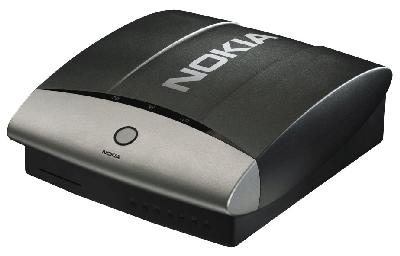Nokia Linux-based Internet/TV coming to US living rooms
Jan 5, 2001 — by LinuxDevices Staff — from the LinuxDevices Archive — 18 viewsLas Vegas, NV — (press release excerpt) — Nokia plans to bring its first consumer retail product -- other than a mobile phone — to the United States by the end of 2001. The Media Terminal, a “home infotainment center” that seamlessly combines the Internet and digital TV broadcast, brings a unique product category to the market where consumers can utilize one central device for organizing and storing… today's popular technologies.
The Media Terminal offers innovative integration of digital video broadcast satellite (DVB-S) service, full Internet access and personal video recording — all through the convenience of the living room TV. Nokia NaviBars, an easy to use navigation browser, provides a smooth transition from TV to full web content. Capabilities for consumers include the ability to view a TV/Internet split screen; digital TV recording to a hard disc with pause-and-play and video-on-demand options; MP3, video and digital photo file storage; 3D and interactive games and digital TV/radio. They can also browse the web, communicate via email and chat, and set up personal bookmarks and address books. The Media Terminal easily connects to devices such as printers, scanners, digital cameras and gamepads.

Nokia is basing its Media Terminal on open standard technologies, including Linux, Mozilla, and HTML for which there are already a wide range of services and applications available. By giving access to its source code, Nokia provides an environment where developers can easily create new applications for the Media Terminal. The hardware technology is based on an Intel x86 architecture combined with a Nokia DVB-S receiver module, hard disk and additional network interfaces based on PCI modules.
This article was originally published on LinuxDevices.com and has been donated to the open source community by QuinStreet Inc. Please visit LinuxToday.com for up-to-date news and articles about Linux and open source.